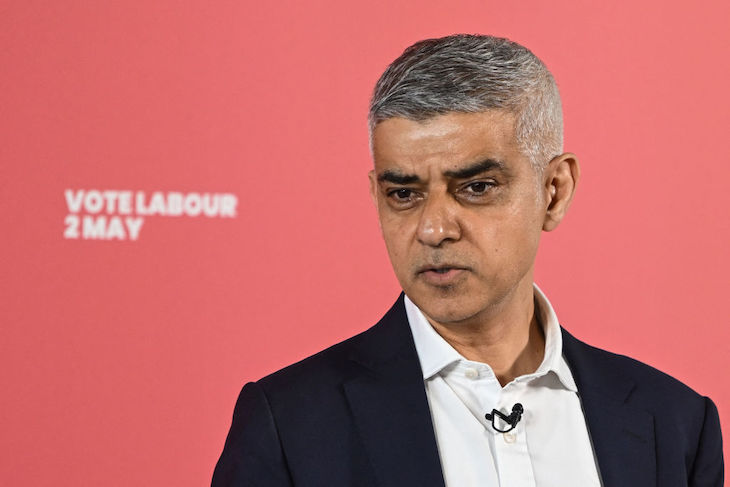More than four million women and girls live in London. They represent over half (51 per cent) of the capital’s population. But under Mayor Sadiq Khan they have been reduced to an afterthought.
The nation’s capital has become a hostile environment where the incidence of rape has soared, female commuters are routinely harassed, working women routinely underpaid, and mothers foot exorbitant childcare bills that force many to skip meals or fall behind on bills. The list of charges against the sitting Mayor is long: it is up to the women of London to vote him out next week. ‘Anyone but Khan’ should be on every woman’s lips.
The financial struggles of London’s women risk affecting the next generation of Londoners
London life is even more brutal for disadvantaged and vulnerable women: single mothers with dependent children are more likely to be in overcrowded accommodation; domestic abuse survivors cannot rely on refuges to be women-only safe havens; and rape victims cannot be sure that the police officer to whom they have reported their ordeal is not under investigation for a domestic abuse or sexual violence himself.
Under Khan, the bobby on the beat has become the policeman on the prowl. Who can forget the Sarah Everard murder by a serving Met officer and the repellent reaction of that police force, overseen by the Mayor?
More recently, the country’s largest force, which employs 32,000 police officers, has been exposed as pillar of misogyny. An increasing number of accusations of domestic abuse, sexual harassment and violence against women have been levelled against the Met: 548 police officers were under investigation for domestic abuse, sexual abuse or both in 2023. Over 100 of those officers were still on front-line duty. When Met chief Mark Rowley was asked to guarantee that a police officer accused of violence against women would not be the one investigating allegations of rape, he said he could not guarantee any such thing.
Nearly half of women in London has been the victim of a violent attack in the past five years, according to the Centre for Social Justice. Over a third have suffered some form of sexual harassment on their daily commute. Meanwhile, violence on the underground has soared in particular: data compiled by the British Transport Police recorded 3,542 incidents on the tube in the 12 months to the beginning of last November, compared to 2,029 two years ago – a 75 per cent increase. 909 sexual offences, excluding rape, had been reported between 1 December 2022 and 30 November last year, compared to 866 in the previous 12 months. The number of robberies also rose steeply to 736, up from 442.
The incidence of rape is higher than ever under Khan, with just over 7,000 recorded in the year to September 2023 alone. This figure likely underestimates the real numbers, according to a survey by the City University of London conducted as part of Operation Soteria Bluestone, the Home Office initiative aimed at transforming the police’s response to rape. Many victims of rape in London under-report or withdraw reports altogether because of how police officers deal with them.
The Mayor has made much of investing £117 million in tackling violence against women and girls since he was first elected in 2016. However, frontline workers in domestic abuse refuges have reported that when they suggested to Sadiq Khan that they treat men sent to them by transgender organisations separately from the women, the Mayor refused to agree (‘We will not fund organisations that discriminate against anyone’, the message seemed to be.). This was despite the fact that the Equality Act 2010, which Khan had voted for while an MP, provides a legal exemption for domestic abuse refuges. When Joan Smith, his co-chair of the Mayor’s Violence against Women and Girls board, argued that it was crucial for vulnerable women to access women-only spaces such as refuges, the Mayor’s team sacked her. Khan’s deputy, Sophie Linden, denied this was the reason Smith was let go.
It’s dangerous in hospitals for women in the capital too: Khan’s own City Hall dubbed the care offered to expectant mothers a ‘postcode lottery’. With the number of deaths in childbirth rising sharply across the country, almost certainly including in London, this is a great cause for alarm. And women are more likely to live in poverty too: 24 per cent of women are not working at present with a further 13 per cent employed part-time (compared to 12 per cent and 6 per cent of men respectively). Those who have found a job are more likely to be employed in low-paid work – and more than twice as likely to be in temporary employment and on zero-hours contracts.
The financial struggles of London’s women risk affecting the next generation of Londoners: an hour of childcare in some London boroughs costs nearly half the average hourly wage. Hackney, for instance, has some of the highest childcare costs in the country. No wonder women are the ones most likely to be skipping meals and worrying about their ability to pay the bills.
Sadiq Khan has turned London into a hellhole for women. Let’s kick him out.







Comments